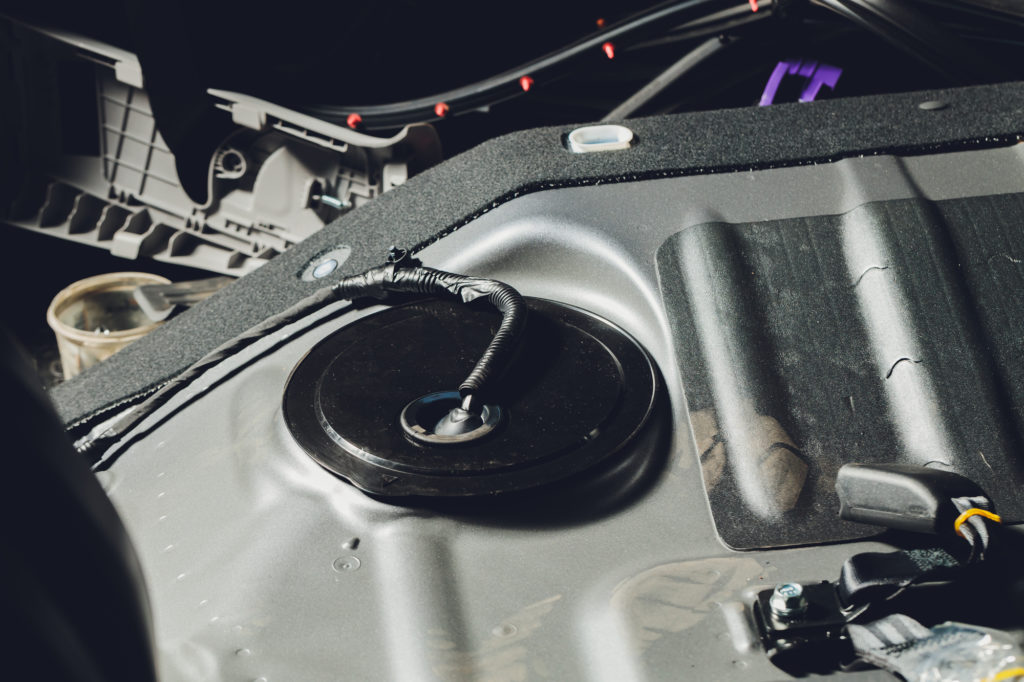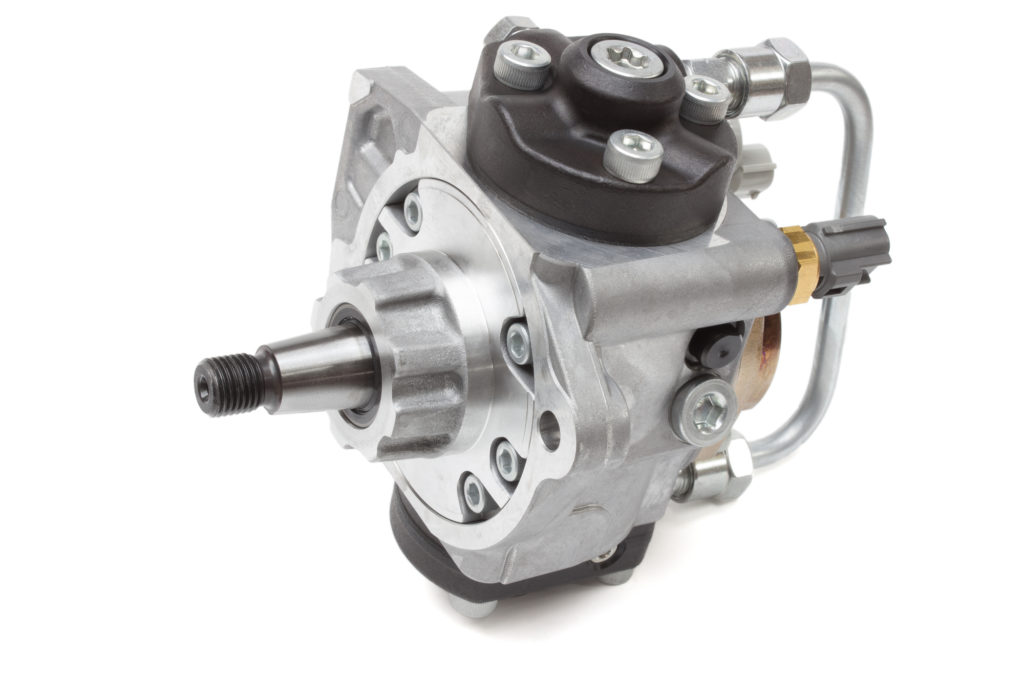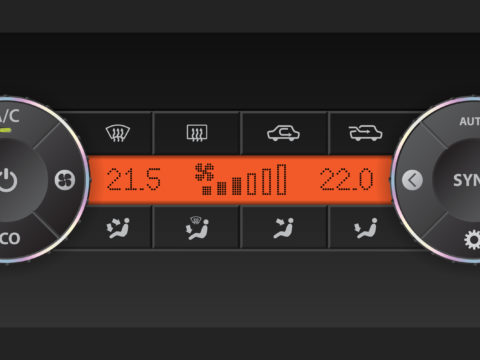Oil pressure is not the only pressure that keeps a car’s engine running, as fuel pressure is equally as important. And to ensure that pressure, as well as the fuel lines in general, are intact is the job of the fuel pressure sensor.

The pressure sensor replacement cost averages around $300.
Contents
What does a fuel pump sensor do?
Fuel rail pressure sensors are one of the numerous types of pressure sensors that modern cars are equipped with. Specifically, the fuel pressure sensor monitors the fuel pressure inside the fuel rail. Basically, the fuel rail pressure sensor is there to detect if any fuel is leaking from the system.
The fuel rail pressure sensor also communicates this data and information to the car’s engine control unit, which will then notify the driver if any problems arise by illuminating a warning light.
Also, with the increasing concern about environmental issues and as the fuel rail pressure sensor is part of the EVAP system, the sensor must function correctly to pass emissions testing.
Where is the fuel pump sensor located?
The fuel pump sensor is one of the components of the fuel pump assembly, which is located in the rear of the car along with the fuel tank. The fuel rail pressure sensor is one of the parts associated with the evaporative emissions system (or EVAP).
The actual fuel rail pressure sensor will be located either on top of the fuel tank or inside the fuel tank. It is important to note that a car could have one, two, three, or even four fuel sensors.
Symptoms of bad fuel tank pressure sensor
These are the most common symptoms of a bad fuel pressure sensor.
CEL – check engine light
This may seem like a one size fits all symptom, and that would be because it is.
Yes, there are dozens of reasons why a car’s check engine light will come on. But, that is why the check engine light is possibly the most valuable warning sign you have in your car.
This is most commonly the first indication you will have that something is wrong. While the warning light itself will not tell you anything specific about the problem it has detected, a diagnostic scan tool called an OBD reader will tell you the specifics. And getting the reading is free.
While the most famous place to go for a free diagnostic tool and reading for the check engine light is AutoZone, virtually every auto parts store now offers the testing and reading for free.
Difficulty to start
A bad fuel rail sensor will directly affect the engine control unit, which will then affect the amount of fuel that is being forced into the car’s combustion chamber. Thus, you can experience difficulty in starting the engine.
Poor acceleration
This is another possible result of a faulty fuel pressure sensor and how it affects the electronic control unit.
The ability for the engine to perform correctly requires it to have the exact amount of fuel. Bad fuel rail pressure results in bad information for the ECU, resulting in the engine receiving the wrong amounts of fuel.
You know how your car should move when you press down on the gas pedal, and that won’t change without a reason. So, even though the engine is running, you need to investigate if you notice it’s not running correctly.
Stalling engine
The other side of that coin is it will simply stop running.
If the fuel rail pressure sensor does not allow the ECU to keep enough fuel in the combustion chamber to maintain the proper air-fuel ratio, the engine will simply stall.
This should be seen as a sign that the problem with the fuel rail pressure sensor is developing from bad and getting worse.
Worsening fuel mileage
A bad fuel pressure sensor will act as a domino effect throughout the entire fuel rail and fuel delivery system. This will not only affect the engine’s performance, but it will also affect how efficiently your car uses fuel. In other words, your fuel consumption is going to increase.
This is due to the engine stalling, not starting, and or injecting too much fuel into the engine. Nevertheless, this symptom is only adding to the overall cost you will spend to replace the fuel pressure regulator and parts, as you will be stopping to fill up the fuel tank much more often.

What causes fuel tank pressure sensor failure?
What causes the fuel rail pressure sensor to fail? A few different reasons are commonly to blame, and these are the typical ones.
Bad fuel lines
There are numerous issues that could create a bad environment inside the fuel system.
A clogged fuel filter could restrict flow or allow dirt to get into the fuel lines. This could result in a restricted supply line of fuel which could also have adverse effects on the fuel pressure regulator as well.
Defective fuel pump
A weak fuel pump can also create problems for the fuel rail pressure sensor. While the sensor is built to last, it is built to last under normal working conditions. A faulty part in the system can and often will affect the entire system.
Damaged fuel tank
Damage to the fuel tank could result in a bad fuel rail pressure sensor. If the tank is leaking, if foreign debris is in the tank, or even too much air can all have effects that will be passed down the line.
Faulty pressure sensor
The fact that the part is simply bad can never be completely ruled out. These parts are manufactured in the thousands, and it would simply be impossible for there to never be a part that came off the assembly line without some faults.
How to test fuel tank pressure sensor with a multimeter
You can test the fuel sensor yourself with a multimeter in six easy steps.
- With the car off, disconnect the sensor.
- Start the car and connect the multimeter.
- Compare the multimeter readings to those listed in the car’s manual – if they don’t match, that is typically an indication that the sensor is missing this reading.
- Inspect all the car’s wiring under the hood using the test box which came with your car.
- Even if the reading was good and nothing was found in the wiring, it is a good idea to conduct some cleaning of the fuel-injected parts of the system.
What happens if the fuel pressure sensor goes bad?
The most immediate result will be any of the above-listed symptoms of a bad fuel pressure sensor. A bad fuel pressure sensor means that you can expect to incur the fuel pump sensor symptoms and cost of replacement.
How much is replacing a fuel pressure sensor?
The cost of replacing a fuel pressure sensor is one of those repairs that tend to be nearly the same regardless of what car you own. The labor cost typically runs between $100 and $150, while the fuel pressure sensor replacement part itself averages $150.














